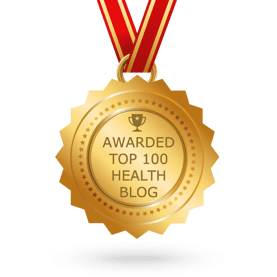
In 2018 the CDC released a report estimating that 50 million Americans have chronic pain, and that 40% of those have “high-impact chronic pain,” defined as pain that is severe enough to frequently limit life or work activities. Add to that the emotional version of pain – mood and sleep disorders – which often complicates the physical version of pain, and now we are talking about 50% of Americans.
Why are so many people in mind and body pain, living lives that can't seem to find long-term, sustainable solutions?
Inflammation is certainly one of the factors, caused by Lyme Disease and chronic infections, gastrointestinal or microbiome disorders and food allergies. At the very least, integrative & functional medicine provides some relief in regards to inflammation, and a whole host of nutrients, from essential fatty acids to various anti-inflammatory herbals can get results for a lot of people.
The Real Source of Pain
However, what I would like to address here is a source of pain which is usually not addressed, the brain, which aligns with the title; the reign of pain is mainly in the brain (borrowing the quip from one of the songs in the play My Fair Lady). What is happening in phantom limb pain, when a patient who has lost a leg complains of pain in a foot which is not even there? Why do opioids treat chronic pain well, when they have no action at the site where the pain is in the body? Why does physical pain often get worse during times of emotional pain? The answer to all of these puzzles is that pain often has more to do with a malfunctioning brain than with the site in the body where pain seems to exist.
Effective Strategies for Pain
Two technologies are very useful for dealing with the reign of pain which mainly exists in the brain:
1) boosting the natural endorphins in the brain with a selective amino acid treatment, and
2) realigning the neurotransmitters like endorphins in the brain using mindfulness
The core backbone of an endorphin, the brain’s natural heroin, is an enkephalin, a five amino acid-containing molecule. An amino acid panel can find the missing amino acid(s), and with targeted supplementation, suddenly our natural endorphins can kick in and help with or abolish the pain. Genomic testing is very helpful for determining which pain-modifying neurotransmitters are not up to par, and here is where targeted nutritional supplementation often works well also.
Mindfulness practice essentially tunes up the brain chemistry as it activates the prefrontal cortex which is also called the “executive function.” This part of the brain is like the conductor of the orchestra, and without its input, the orchestra sounds like cacophony, like when they are warming up. Mindfulness brings in the conductor so that the all the sections of the orchestra start playing together in harmony. This often translates into proper application of the brain’s neurotransmitters, which translates into less chronic emotional and physical pain.
If dealing with chronic pain, don’t forget that the reign of pain is mainly in the brain, and often not at the place where the body seems to hurt.
Feeding the brain the proper precursors for missing neurotransmitters and mindfulness practice can often make a big difference.
 Charles Gant MD, PhD, is a physician, author and teacher and has practiced Integrative and Functional Medicine for over three decades. He specializes in molecular health and healing, especially as it supports growth and recovery from problems such as ADHD, addictions/substance dependence, chronic diseases, metabolic and immune disorders, infectious disease, and more. He is an expert in interpretation of functional medicine testing to diagnose precisely what is deficient in each patient, and then replenish those missing, essential items.
Charles Gant MD, PhD, is a physician, author and teacher and has practiced Integrative and Functional Medicine for over three decades. He specializes in molecular health and healing, especially as it supports growth and recovery from problems such as ADHD, addictions/substance dependence, chronic diseases, metabolic and immune disorders, infectious disease, and more. He is an expert in interpretation of functional medicine testing to diagnose precisely what is deficient in each patient, and then replenish those missing, essential items.
.png?width=305&height=132&name=NIHAlogoBLUE_3_transparent%20(2).png)

